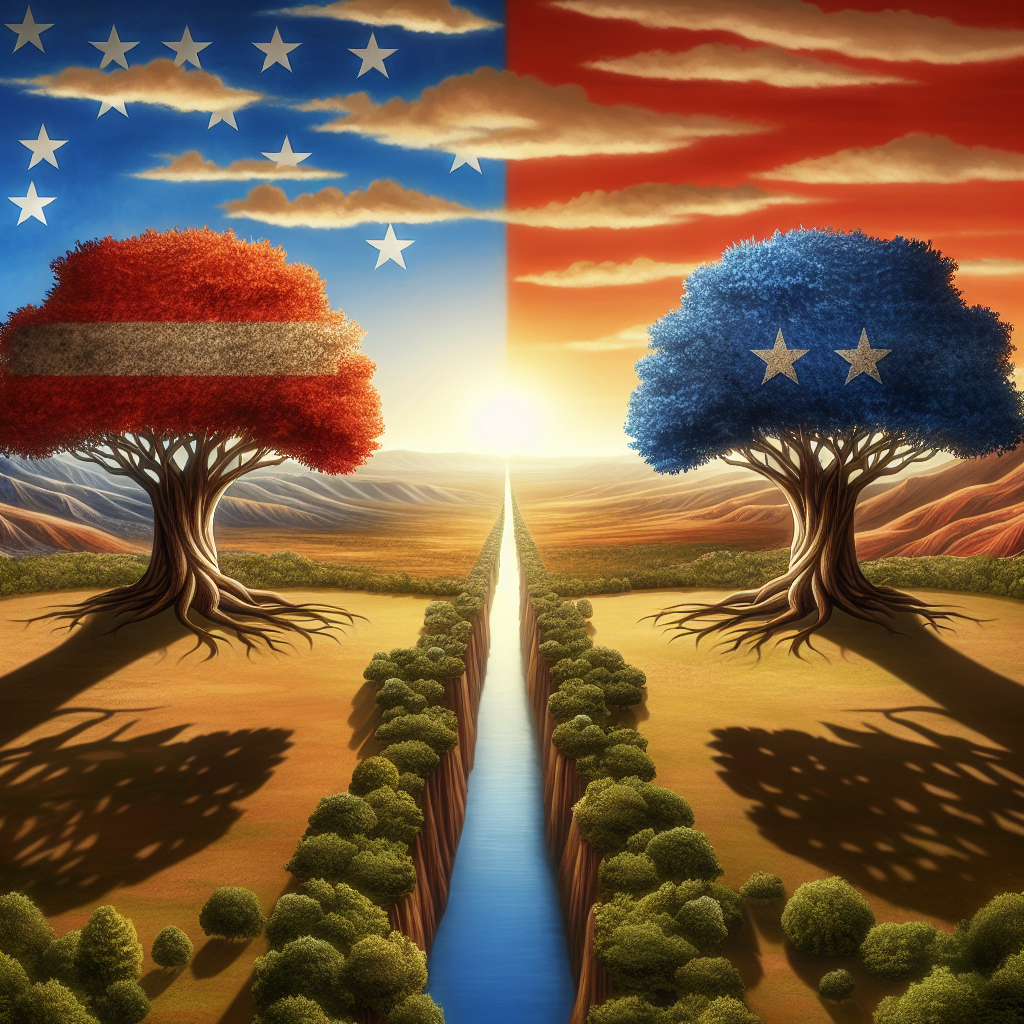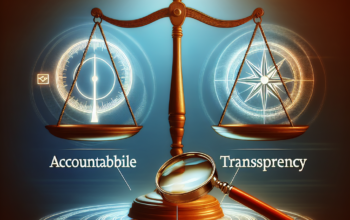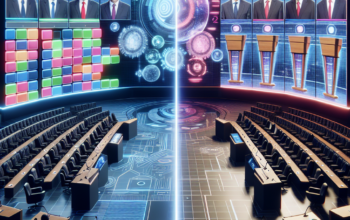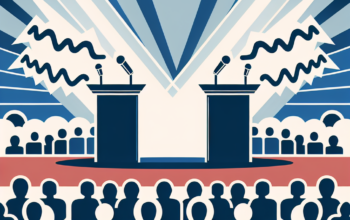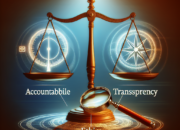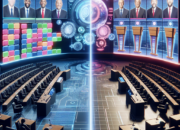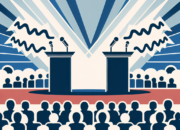Understanding the Growing Divide in American Political Ideologies
In the contemporary landscape of the United States, the growing divide in political ideologies has become increasingly pronounced, affecting not just political parties but the very fabric of society. As we navigate through 2025, understanding the intricacies of this divide is essential for anyone invested in the future of American democracy. The rise of polarized views, driven by various socio-economic factors, technological advancements, and cultural shifts, poses challenges that require insight and dialogue. This article aims to unpack these complexities and explore what this divide means for governance, social cohesion, and individual beliefs.
The Historical Context of American Political Ideologies
To truly understand the growing divide in American political ideologies, one must first explore the historical context that has shaped the nation’s political landscape. The roots of American political thought can be traced back to the founding principles of individual liberty, democracy, and civic responsibility, which laid the groundwork for modern liberalism and conservatism. Historically, these ideologies have evolved in response to social changes, economic transformations, and international events. For instance, the Civil Rights Movement of the 1960s not only reshaped the Democratic and Republican parties but also catalyzed the ideological polarization that we see today.
In recent decades, the ideological divide has intensified, particularly due to the rise of identity politics and the fragmentation of media. The advent of the internet and social media has allowed for the rapid dissemination of tailored content that reinforces existing beliefs. Platforms like Facebook and Twitter have become echo chambers where extreme viewpoints thrive. This technological evolution is fundamental to understanding why political arguments have become more vitriolic and less accommodating of differing opinions than ever before.
The Impact of Social Media on Political Ideologies
Social media’s role in enhancing ideological divides cannot be overstated. The tailoring of news feeds through algorithms means that individuals are more likely to encounter information that aligns with their pre-existing beliefs, leading to the phenomenon known as confirmation bias. This digital landscape creates an environment where users become increasingly entrenched in their ideological camps. Research indicates that exposure to diverse viewpoints is essential for a healthy democracy; however, social media often limits this exposure, fostering a culture of intolerance toward opposing perspectives.
Moreover, misinformation and disinformation campaigns have thrived on these platforms, further fracturing public trust in institutions. By 2025, studies have shown that a large portion of the American populace receives their political information from unreliable sources, which can skew public perception and create hostile environments for civil discourse. Understanding how social media influences political ideologies is vital for addressing the growing divide and paving the way for a more informed citizenry.
The Role of Economic Factors in Political Polarization
Economic disparities have also significantly contributed to the growing divide in American political ideologies. As the wealth gap widens, differing economic interests lead to divergent political views. The top 10% of income earners in the U.S. hold over 70% of the country’s wealth, creating a chasm between the wealthy elite and the working class. This economic divide fuels resentment and heightens ideological differences, particularly among those who feel marginalized or disenfranchised.
Furthermore, the rise of automation and globalization has resulted in significant job displacement, particularly in industries such as manufacturing. These economic shifts have had a profound impact on political alignment, with many blue-collar workers shifting their allegiance from traditionally Democratic platforms to more populist and right-wing movements. Understanding how economic factors influence political ideologies allows us to grasp the complexities of voter behavior in the 2025 elections and beyond.
Cultural Shifts and Their Influence on Political Ideologies
Cultural shifts play a crucial role in shaping political ideologies, as values, beliefs, and lifestyles increasingly inform voters’ political choices. The emergence of movements advocating for social justice, environmental protection, and gender equality has reinforced ideological divides, as opposing groups rally around conflicting core values. For example, the rise of the environmental movement has galvanized a predominantly younger demographic, often aligning themselves with progressive policies, while pushing back against traditional practices that prioritize economic development over ecological considerations.
Additionally, issues related to race and immigration continue to polarize the American electorate. The demographic changes in the U.S., which are projected to make the country more racially and ethnically diverse than ever by 2025, have led to backlash from segments of the population who feel threatened by these changes. This cultural anxiety often translates into support for more conservative, anti-immigrant stances. The interplay between cultural evolution and political ideology is pivotal for understanding the current rift in American politics.
The Path Forward: Bridging the Ideological Divide
While the divide in American political ideologies can seem insurmountable, there are pathways toward bridging these gaps. One of the most critical steps is fostering open dialogue among individuals with differing viewpoints. Encouraging civic engagement and community discourse can help mitigate polarization by promoting understanding and empathy. Initiatives that bring together diverse groups for conversations can emphasize shared values and mitigate the “us versus them” mentality pervasive in today’s politics.
Another approach is reforming the political system to encourage cooperation and bipartisanship. Electoral reforms such as ranked-choice voting and redistricting that minimizes gerrymandering can help create a more representative and less polarized political landscape. By 2025, innovative legislative proposals aimed at reducing division and promoting collaboration between parties could play a significant role in revitalizing American democracy.
Finally, education is an essential tool in addressing the growing divide in political ideologies. Implementing critical thinking and media literacy programs in schools can equip future generations with the skills necessary to discern credible information from propaganda. By prioritizing education that fosters informed citizens, the foundation for a more unified political discourse can be established.
Conclusion
In summary, the growing divide in American political ideologies is a multifaceted issue shaped by historical context, the influence of social media, economic disparities, and cultural shifts. As we move forward in 2025, understanding these factors is essential for fostering constructive dialogue and finding pathways to bridge ideological divides. Engaging with differing perspectives, reforming the political landscape, and prioritizing education are vital steps that can lead to a more cohesive democratic society. Recognizing the complexities of these divides is the first step toward creating a more unified future for all Americans.
FAQs
What are the main factors contributing to the political divide in the U.S.?
The major factors include historical contexts, social media influence, economic disparities, and cultural shifts, which together foster significant ideological polarization.
How does social media affect political ideologies?
Social media often creates echo chambers that reinforce existing beliefs and limit exposure to diverse viewpoints, contributing to increased polarization and hostility toward opposing perspectives.
Can the political divide in America be bridged?
Yes, through open dialogue, electoral reforms, and improved education focused on media literacy and critical thinking, there are several pathways to mitigate division and foster understanding.
Why is economic disparity linked to political ideology?
Economic disparities can exacerbate feelings of resentment and disenfranchisement among different classes, leading to polarized political allegiances based on perceived interests and values.
What role does culture play in political polarization?
Cultural shifts, particularly around issues such as race, gender, and environmental concerns, frequently lead to opposing groups rallying around conflicting values, further entrenching political divides.
